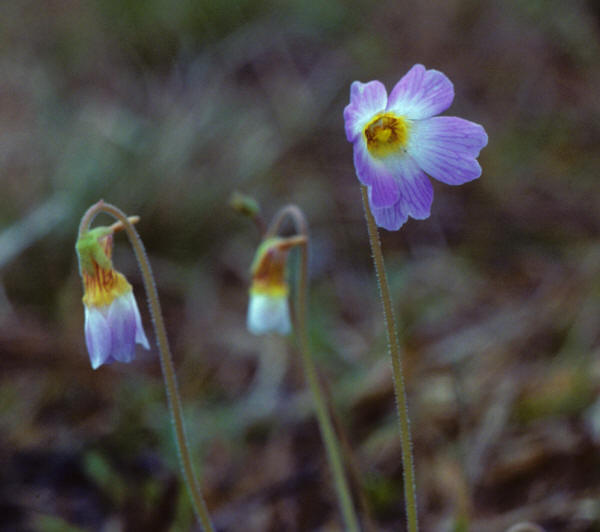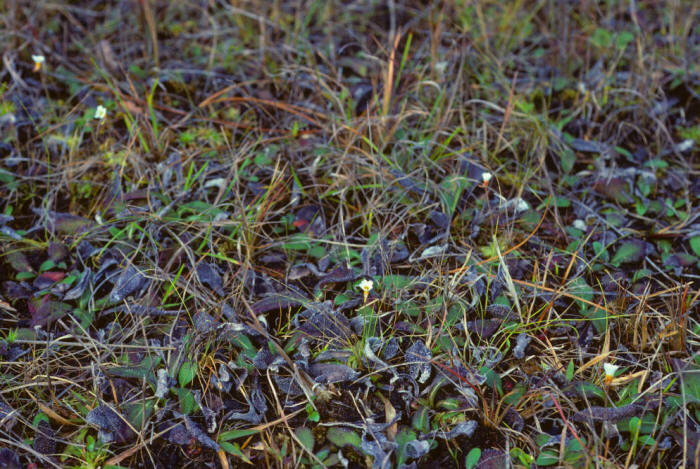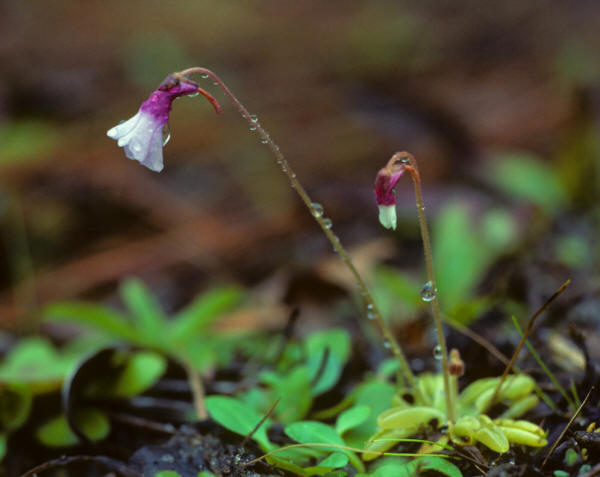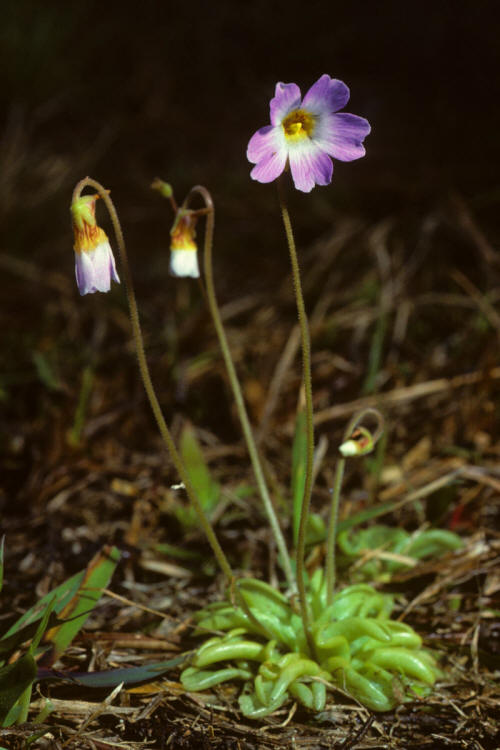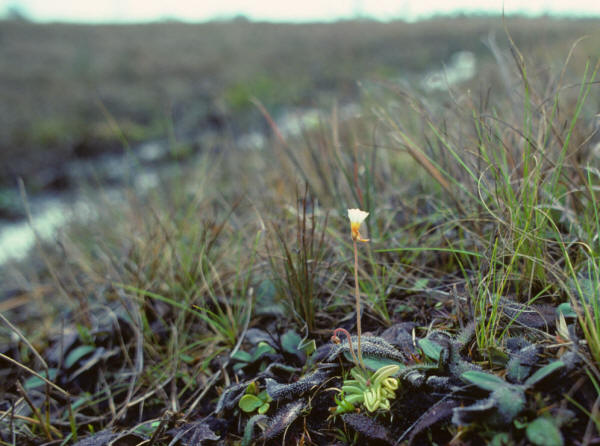|
Carnivorous Plants Story
|
||
|
|
Pinguicula pumila This is the small est of all six species of butterworts growing in the southeastern coastal plain of the U.S. The rosette diameter generally does not exceeds 3.0 cm in nature, though I have seen a large plant with leaves 2.5 cm long. The tiny size of the plant makes it almost impossible to find in the field when out of flower. In the Florida panhandle and the adjacent areas, flowering starts in mid-February, along with other butterworts' blossoms in the region. A slender scape reaches up to 10 cm in height, with an open flower 1.5 cm across, with a blunt spur 3-5 mm long. This species exhibits a wide variations in flower color in the wild. The photo below shows the plant with a purplish corolla with a while ring at the base, somewhat reminiscent of P. primuliflora flowers. Each lobe is lightly notched. The yellow corolla tube, clearly veined in dark chocolate.
A colony of white flowered P. pumila growing in masses along the coastal plain of the Florida panhandle, in early March. Although the plants are fairly common throughout the region, finding a tiny rosette requires a determined mind when the plants are out of flower, being covered with surrounding vegetation.
Blossom of P. pumila caught in a sudden rain, on a chilly spring day (above). The plant of P. pumila does not produce winter hibernacula. Surrounding vegetation offers light protection from the cold during the winter months. A green leaf has strongly curled edges. This makes the vegetative part of the plant similar to that of P. lutea, P. caerulea, and P. primuliflora. In fact, these three species all prefer moderately dry areas (relatively speaking) compared with P. planifolia, P. ionantha and P. primuliflora. . . I have seen colonies of these (p.lutea, caerulea, pumila) in the same general area - though not mixed - in the pine forest.
A blossom of P. pumila enjoying the afternoon sunshine (above). A flower at the tip of a slender scape turns upward when in full sun as if trying to reach the sun.
Flower color of P. pumila varies widely from white to purple to yellow, and with various color permutations of corolla lobes and corolla tubes. More or less common seems to be a creamy color of the palate which is not exserted even when the flower is fully open in the sun. Note a slight overlap of corolla lobes in the open flower.
Introduction Venus Flytrap Sundews Pitcher Plants Cobra Plant Butterworts Bladderworts
|
|
